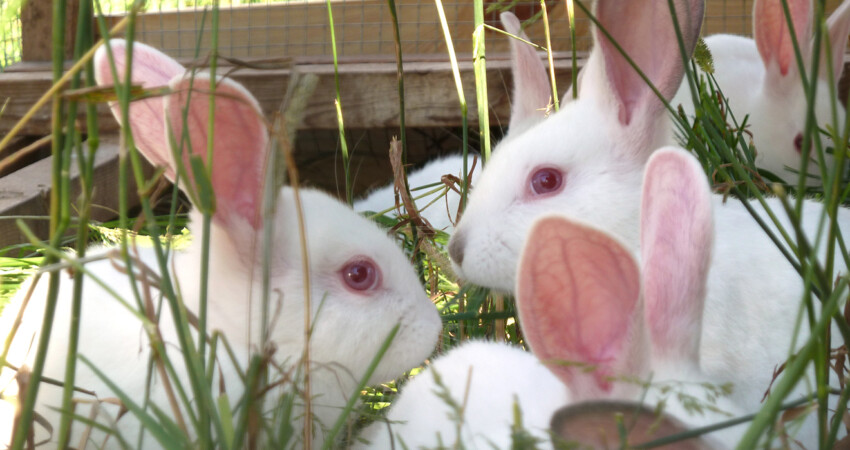

A successful rabbit venture is underpinned by three essentials: appropriate housing, quality feed and perhaps most importantly, picking the right breeders. Housing can be renovated whilst the enterprises moves along, better feed can be sought in time, but picking a substandard starter stock will undercut your entire venture, with even the very best housing and feeds wasted on poor sires. For this reason, Seeds of Gold lists the essentials to ensuring your rabbit venture isn’t a sunk cost even before the first kits are born.
Gene purity
A pedigree-registered rabbit whose bloodline is trackable is your best bet. But in reality, things aren’t as straight forward. Anyone purporting to sell you pure-line rabbits is probably taking you for a ride. Most rabbits have been bastardised to some degree. Your best bet would be ensuring that the rabbit has attained the requisite weight for its sex, age and breed.
The rabbit should also exhibit phenotypically corresponding characteristics to its breed. As an example, a Californian White rabbit should have black markings on its nose, feet and tail, whilst its eyes will be pink. Due to the extra vigour that can be achieved sometimes through hybrids, there are particular crossbreeds that are good options.
For instance, a New Zealand, Flemish Giant cross has the Giant’s propensity to gain lots of weight and the New Zealand’s fast feed-to-meat conversion
Inbred rabbits – especially siblings within the immediate litter – will tend to be tiny compared with those of the same variety that are crossed with other lines. So avoid inbreeding.
Temperament
This might seem superfluous, but anyone whose handled a wild rabbit has scratches that attest to it not being a fun experience. Your breeding stock could be with you for more than two years. Does will need moving for breeding; rabbit hutches need daily cleaning and replenishing of feed and water. It is torturous ending up with bandages on your hands every time you have to handle your rabbits. Rabbits, especially those you wish to breed, should be used to human contact from an early age.
A boxy muscular frame
Your rabbit should be blocky and filled with pronounced musculature. It shouldn’t be bony or lanky. The pivotal areas for inspection are: the rabbit’s loins, that is, the back of the neck. You should feel meat and muscle, the rabbit’s spine shouldn’t be stuck out. The hind of the rabbit’s back should be well filled, their backbone must not be easily felt. These parts are essential as they constitute most of the meat harvested from a dressed rabbit.
A silky coat, clean ears, bright attentive eyes and unscabbed feet. The rabbits should also have smooth fur. The alert eyes are signs of a healthy vital rabbit. Their ears can fester parasites, such as mites, which cause ear canker and might be transferred to your existing colony. Scabs on the soles of rabbit feet could be a sign of soar hocks, which is genetically transferable.
Mothering ability
This refers to both litter size and a rabbit’s ability to care for its young till weaning. It can be ascertained by asking for her breeding records or those of her parents if she hasn’t yet given birth. The fast growth of rabbits’ kits is also important. The rabbits should attain butchering weight of three kilogrammes in under four months.
 Contact Jaguza Support
Contact Jaguza Support